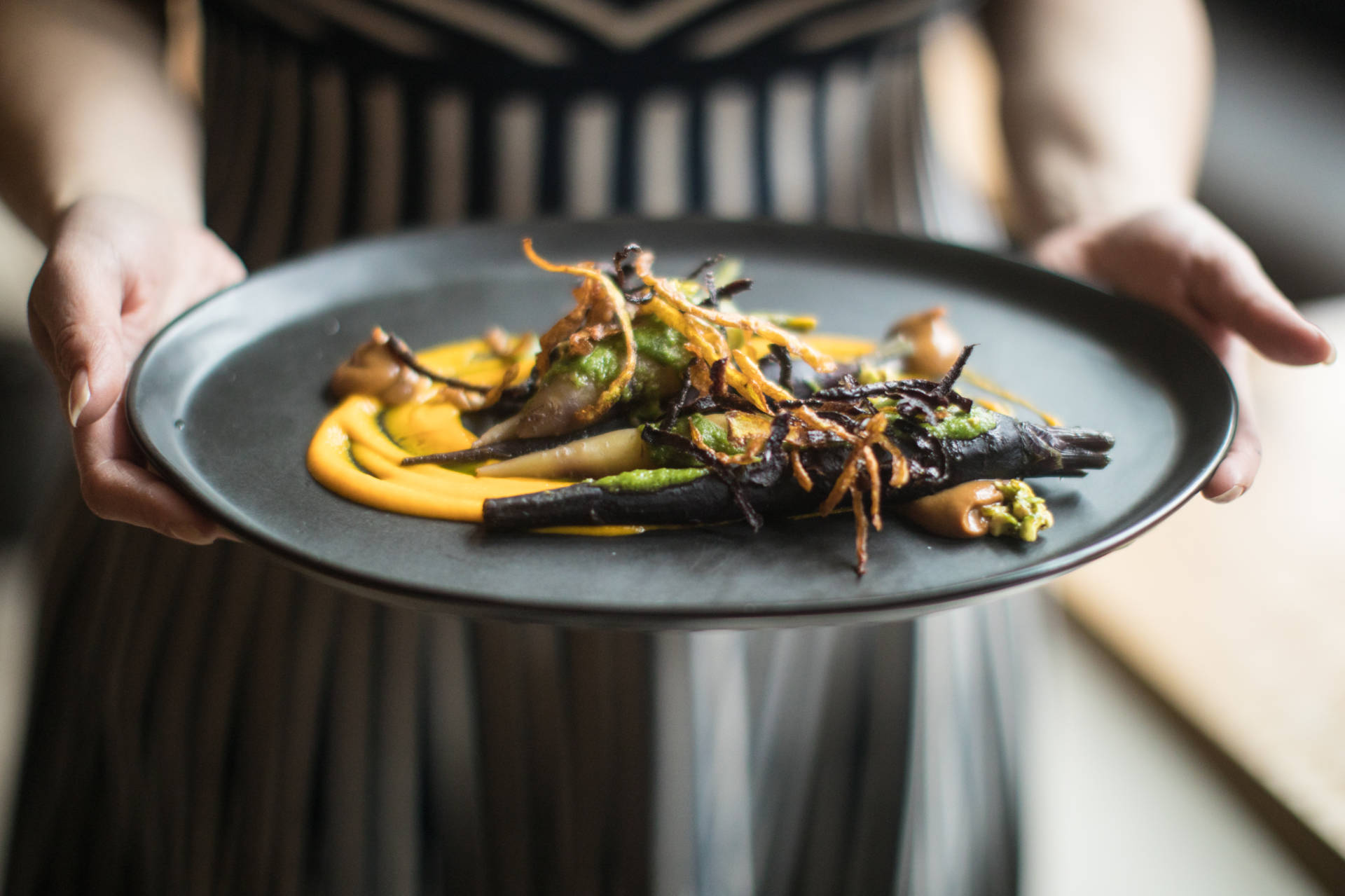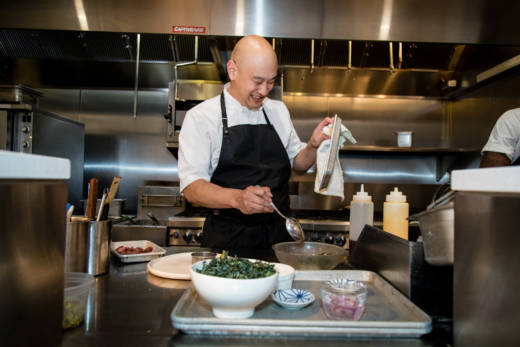Where other chefs might see kitchen trash, Tim Ma finds treasure — for his culinary creations, and his bottom line.
In Ma's kitchen at his popular Washington, D.C., restaurant, Kyirisan, sea bass filets are served to diners, the bones becoming the basis for stocks while the heads might be deep fried and served as an off-menu item. Carrot tops aren't tossed out — they're blended with sautéed garlic, oil, water, basil, parsley, pistachios and scallions to make a creamy pesto. Carrot peels are recycled, too — fried into thin strips that become a crunchy garnish. Tough kale stalks might be braised, then fried for more texture and tossed into a salad with pickled shallots, radishes and duck confit.

"I'm in this fine-dining world, but I spend a lot of time going through my garbage," jokes Ma.
The goal, he says, is not just to show off his culinary creativity, but to fight food waste — and boost his profit margins. "Food waste and food cost are everyday money things," he says. "We're still learning every day how to be smarter about it. We always look at something and think, oh, I don't want to throw that away. How can I use that in something? And I'd say seven out of 10 times, you can't use that. And the other times, you have to get really creative."
Indeed, one of Ma's signature dishes — crème fraiche chicken wings with with gochujang (Korean red pepper paste) and sour sudachi juice — was born of this clever conservation. Ma says he used to take the wings left over from the whole chickens he'd order at his previous restaurant, then slather them with his own concoction and serve them to restaurant staff. The wings proved so popular, they ended up on his menu — though Ma was reluctant at first. "I was like, 'I don't want to put wings on my menu. What's next, loaded potato skins?'" he jokes.

In recent years, it's become almost chic for chefs to fight food waste. About a third of all food produced in the U.S. is tossed out. It's not only a waste of all the water, energy and other resources that went into growing food, but as these edibles decompose in landfills, they release the powerful greenhouse gas methane.


